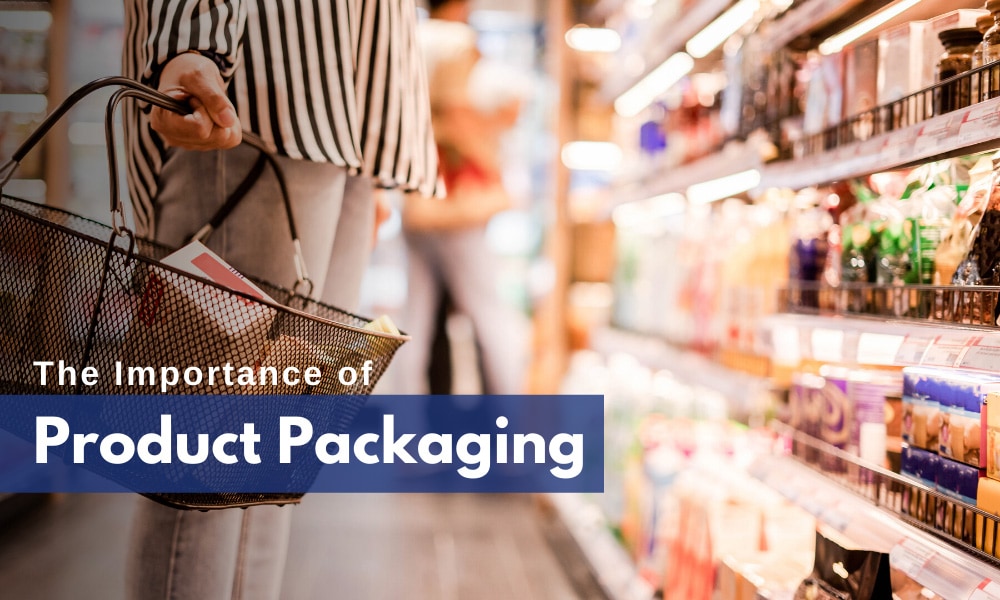In the dynamic world, packaging is more than just a protective layer; it’s a powerful marketing tool that can significantly enhance a product’s visibility and sales. This blog deep dive into the influential potential of innovative packaging design, illuminating its capacity to lift a product above the clutter on shelves and engage the interest of consumers.

1. First Impressions Matter:
a. Explore the significance of the initial interaction between a product and a prospective buyer – This involves understanding the crucial moments when a consumer first encounters a product and the impact it has on their perception and decision-making process.
b. Explore the role of packaging as the initial point of interaction, shaping consumer perceptions and setting expectations – Packaging serves as the storyteller, introducing consumers to the narrative of a product. Its role goes beyond being a mere container; it is a visual and informational tool that shapes perceptions, communicates brand values, and, ultimately, plays a crucial role in the consumer’s purchasing journey.
2. Building Brand Identity:
a. Analyze how packaging is a crucial element in brand building – It serves as a tangible expression of a brand’s personality, values, and promises. Through strategic and thoughtful design, packaging becomes a dynamic tool that not only protects the product but also communicates a narrative that engages and resonates with consumers, fostering long-term brand loyalty.
b. Highlight case studies of brands that have effectively utilized packaging as a powerful tool to express their distinctive identity and core values – These case studies illustrate how successful brands leverage packaging as a visual and tactile extension of their identity and values. By carefully aligning packaging with their core principles, these brands create a holistic and memorable experience for consumers, reinforcing brand loyalty and setting themselves apart in the market.
3. Standing Out in the Crowd:
a. Navigate the crowded retail shelves and understand the challenge of standing out and being distinctive – We refer to the highly competitive environment where numerous products struggles for consumer attention. The challenge lies in the need for a product to stand out and establish a distinctive presence amidst the sea of similar offerings.
b. Highlight successful packaging designs that have effectively distinguished products in competitive markets – Explore how these designs played a pivotal role in creating a distinct identity, capturing consumer attention, and contributing to the products’ success within their respective industries.
4. Functionality Meets Aesthetics:
a. Discuss how innovative packaging can enhance user experience and convenience – Innovative packaging goes beyond aesthetics; it actively contributes to a positive user experience by incorporating user-friendly features, sustainability considerations, and engaging elements. Brands that prioritize these aspects not only differentiate themselves in competitive markets but also foster long-term customer satisfaction and loyalty.
b. Explore the delicate balance between practicality and visual appeal in packaging – The delicate balance between practicality and visual appeal in packaging is an intricate dance that successful brands master. Achieving this balance ensures that the packaging not only attracts consumers but also fulfills its fundamental purpose of protecting and enhancing the product within. It is a holistic approach that considers the entire lifecycle of the product, from manufacturing to the hands of the end consumer.
5. The Psychology of Design:
a. Uncover the psychological aspects of consumer decision-making related to packaging – Understanding these psychological aspects enables brands to tailor their packaging to appeal to specific consumer sentiments, preferences, and decision-making processes. Packaging becomes a powerful tool not only to protect the product but also to engage and influence the minds of consumers in a way that aligns with the brand’s objectives.
b. Discuss how colors, shapes, and overall design impact emotional connections with the product – Colors, fonts, shapes, and overall design are powerful tools that brands employ to create emotional connections with consumers. The careful selection and integration of these design elements contribute to a product’s visual identity, influencing how consumers feel about and relate to the brand. Emotional connections foster brand loyalty, making design an integral aspect of a brand’s overall success.
6. Success Stories:
a. Feature success stories of products that experienced a surge in visibility and sales due to innovative packaging – The success stories highlight how strategic and innovative packaging designs can lead to increased visibility, consumer interest, and ultimately drive sales for diverse products in competitive markets.
b. Showcase before-and-after scenarios to emphasize the impact of strategic redesign – In essence, the before-and-after scenarios showcase how strategic redesign can be a transformative journey for a product, influencing its visual appeal, functionality, differentiation, and overall success in the market. By addressing shortcomings and aligning with consumer preferences, strategic redesign becomes a powerful tool for brands to thrive in a competitive landscape.
7. Social Media Amplification:
a. Explore the ripple effect of user-generated content in expanding a product’s reach – The ripple effect of user-generated content (UGC) plays a pivotal role in expanding a product’s reach, creating a dynamic and interconnected network of brand advocacy. User-generated content involves consumers sharing their experiences, often in the form of photos, videos, reviews, or social media posts.
b. Discuss how aesthetically pleasing packaging becomes shareable content on social media – Aesthetically pleasing packaging becomes shareable content on social media by appealing to the visual senses, creating memorable unboxing experiences, aligning with consumer lifestyles, and triggering emotional connections. Brands that understand the social media landscape and leverage the share ability of their packaging can harness the organic reach and advocacy of consumers, contributing to increased brand visibility and engagement.
Conclusion:In conclusion, consumers are bombarded with choices, innovative packaging stands as a beacon, guiding the consumer towards a product that not only meets their needs but also engages them on a deeper level. The success stories and strategies explored underscore the transformative potential of packaging design in creating lasting impressions, building brand loyalty, and driving market success. As brands continue to recognize the holistic impact of packaging, its role in the marketing ecosystem becomes increasingly indispensable.
